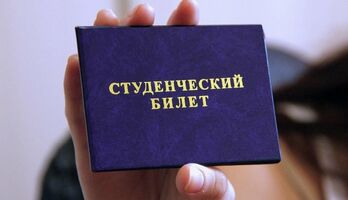Диссертация (1173244), страница 20
Текст из файла (страница 20)
наук. Воронеж,2008. 17 с.101. Arnett G.W., McLaughlin R.P. Facial and dental planning for orthodontists and135oral surgeons. 2004. – P. 233–238.102. Alajbeg I.Z. [et al.]. The influence of age and dental status on elevator and depressor muscle activity // Journal of oral rehabilitation. – 2006. – Vol. 33. –№ 2.
– P. 94–101.103. Artun J. Long-term prognosis of patients with an open-bite malocclusion /79th EOS Congress materials. – 2003. – P. 897–902.104. Bumann A., Lotzmann U., Mah J. TMJ disorders and orofacial pain: the roleof dentistry in a multidisciplinary diagnostic approach. – Thieme, 2002. P. 35.105. Cadogan J., Bennun I. Face value: an exploration of the psychological impactof orthognathic surgery // Br J Oral Maxillofac Surg. – 2010. – № 8. – P. 10.106. Cárdenas H., Ogalde A. Relationship between occlusion and EMG activity ofthe masseter muscles during clenching at maximal intercuspal position: acomparative study between prognathics and controls // CRANIO®.
– 2002. –Vol. 20. – № 2. – P. 99–104.107. Chan C.A. Applying the neuromuscular principles in TMD and Orthodontics// J of the American Orthodontic Society. – 2004. – Vol. 1. – P. 15.108. Combadazou J.C., Combelles R., Cadenat H. The value of mandibularkinesiography and of T-scanning in the diagnosis and treatment of algodysfunctional syndrome of the temporomandibular joint // Revue destomatologie et de chirurgie maxillo-faciale. – 1990. – Vol. 91. – № 2. – P.86–91.109.
Cordasco G. [et al.]. Kinesiographic investigations in children with increasednasal airways resistance // Bulletin du Groupement international pour la recherche scientifique en stomatologie & odontologie. – 1999. – Vol. 41. – № 2–3. – P. 67–72.110. Cunningham S.J., Shute J.
Orthognathic treatment: see how they feel? // J.Orthod. – 2009. – № 36 (1). – P. 61–6.111. De Luca C.J. Electromyography. Encyclopedia of medical devices and instrumentation. – John Wiley Publisher, 2006. – С. 98–109.112. Demiing A. Vergleich der Reproduzierbarkeit elektronisch ermittetter136Funktionsparameter bei Patienten und Probanden : дис.
… канд. мед. наук. Ганновер, 2005. 78 р.113. Moshou D. [et al.]. Wavelets and self-organising maps in electromyogram(EMG) analysis. Proceedings of the ESIT, 2000. – С. 14–15.114. Eichner K. Rontgenkinematographische studien der bewegungen des kondyluszahnloser patienten // Dtsch. Zahnarztl. Ztschr. 1967. Bd.
22. Р. 251–258.115. Farronato G., Maspero C., Giannini L., Farronato D. Occlusal splint guides forpresurgical orthodontic treatment // Journal of Clinical Orthodontics. – 2008. –Vol. XLII. –№ 9. – P. 508–511.116. Farhad B., Martyn T., Umberto G., Fraser Mc., David W. Maxillofac PlastReconstr Surg. 2017. 39 (1).117. Ferrario V.F.
[et al.]. An electromyographic investigation of masticatory muscles symmetry in normo-occlusion subjects // Journal of oral rehabilitation. –2000. – Vol. 27. – № 1. – P. 33–40.118. Fresno M.J., Miralles R., Valdivia J., Fuentes A. Electromyographic evaluation of anterior temporal and suprahyoid muscles using habitual methods todetermine clinical rest position // Cranio. 2007.
№ 25 (4). P. 257–63.119. Galo R., Vitti M., Mattos M.G., Regalo S.C. Masticatory muscular activationin elderly individuals during chewing // Gerodontology. 2007, Dec. – № 24(4). Р. 244–248.120. Gottlieb, E.L. JCO Interviews Dr. Stephen R. Marquardt on the Golden Decagon and human facial beauty // J. Clin. Orthod.: – 2002. – № 36. – Р. 339–347.121. Gutiérrez M.F. [et al.]. The effect of tooth clenching and grinding on anteriortemporalis electromyographic activity in healthy subjects // CRANIO®.
–2010. – Vol. 28. – № 1. – P. 43–49.122. Graziano S., Chiarella S., Dellavia C., Antinori M. Взаимосвязь между вертикальной морфологией лица и активностью челюстно-лицевых мышц уздоровых молодых мужчин // Ортодонтия. 2007. № 1 (37). – С. 27–32.123.
Hickman D.M., Stauber W. Mapping mandibular rest in humans utilizing137electromyographic patterns from masticatory muscles // Cranio. 2007, Oct. –№ 25 (4). P. 264–72.124. Jankelson B., Swan C.W., Crane P.F. Kinesiometric instrumentation a newtechnology // J.A.D.A. 1975. Р. 834.125. Kastano E., Drobysheva N., Babiychuk A., Ogareva N., Slabkovskaya A.Functional state of maxillofacial area in patients with class ΙΙ malocclusioncaused by abnormalities of the jaw bone // EOS 2018.
– SP. P. 203.126. Kashhiwagi K., Tanaka H., Kimura K. Visualization and quantitive analysisnormalized electromyographic linear envelopes of muscle contraction patternsduring gam chewing // J. Osaka Dent Univ. 1995. Vol. 29. – № 1. Р. 1–8.127. Keim R.G. Seeking facial harmony // Journal of Clinical Orthodontics. – 2007.– Vol. XLI. – № 2. – P. 55–56.128.
Kinuta S., Wakabayashi K. Simple system to record jaw movements by ahome digital camcorder // The International J. of Prosthodontics. 2003. Vol. 16. – № 5. P. 563–568.129. Knight H., Keith O. Ranking facial attractiveness // Eur J Orthod. – 2005. –№ 27. – P. 340–348.130. Lang H.G. ARCUSdigma фирмы KaVo – электронная система для регистрации движений нижней челюсти и для предотвращения возникновениянарушений окклюзий после протезирования // Клиническая Cтоматология. 2003. Р. 109.131.
Laura Attina, Michele D’Attilio. La Norma Kinesiografic. 1998. – 238 p.132. Lavorgna G., Cortese A., Giuffr G. The use of kinesiography and electromyography in assessing the outcome of afracture of the mandibular condyles //Minerva Stomatol. 1992, May. – № 41 (5). Р. 233–239.133. Liu Z.J., Yamagata K., Kasahara Y., Ito G. Electromyographic examination ofjaw muscles in relation to symptoms and occlusion of patients withtemporomandibular joint disorders // J Oral Rehabil. 1999, Jan. № 26 (1).
P. 33–47.138134. Maki K., Inou N., Takanishi A., Miller A.J. Modeling of structure, quality,and function in the orthodontic patient // Orthod. Craniofac. Res. 2003. 6 Suppl 1:52-8. discussion. – Р. 179–182.135. Marcos Heredia-Rizo A. [et al.]. Craniocervical posture and trigeminal nervemechanosensitivity in subjects with a history of orthodontic use: a crosssectional study //CRANIO®. – 2013.
– Vol. 31. – № 4. – P. 252–259.136. McNeil C. Management of temporomandibular disorders: concepts and controversies // J. Prosthet. Dent. 1997, May. Vol. 77. № 5. P. 510–522.137. Mihalic C.A., Proffit W.R., Phillips C. Long-term follow-up of Class ΙΙ adultstreated with orthodontic camouflage: F comparison with ortognatic surgeryoutcomes // J of Orthod. Dentofacial Orthop.
– 2003;123-3:266-78.138. Mioche L., Bourdiol P., Monier S., Martin J.F., Cormier D. Changes in jawmuscles activity with age: effects on food bolus properties // Physiol. Behav. –2004. Sep 30;82(4). Р. 621–627.139. Mioche L., Bourdiol P., Monier S. Chewing behaviour and bolus formationduring mastication of meat with different textures // Arch. Oral Biol. 2003,Mar. – № 48 (3). Р. 193–200.140. Miyamoto K., Ishizuka Y., Ueda H.M., Saifuddin M. Masseter muscle activityduring the whole day in children and young adults // J.
Oral Rehabil. 1999,Nov. – № 26 (11). – Р. 858–864.141. Monaco A. [et al.]. Prevalence of atypical swallowing: a kinesiographic study// Eur. J. Paediatr Dent. 2006, Dec. – № 7 (4). Р. 187–191.142. Monaco A., Cattaneo R., Spadaro A. [et al.]. Surface electromyography pattern of human swallowing // BMC Oral Health. 2008. Р.
8–6.143. Murray G.M., Peck C.C. Orofacial pain and jaw muscle activity: a new model// J Orofac Pain. 2007. № 21 (4). P. 263–78.144. Niedermeier W. Reiiabilitat elektronisch registrierter Funktionsparameter.arbeitsgemeinschaft fur funktionsdiagnostik und therapie. – Bad Hamburg,2003. Р. 16–17.139145. Okeson J.P.
Management of temporomandibular disorders and occlusion //2010. Р. 534.146. Okeson J.P. Bells orofacial pains: the clinical management of orofacial pail6th ed. St. Louis : Quintessence publishing Co., 2005. 567 p.147. Palumbo B., Cassese R., Fusetti S., Tartaro G.P. Psychological aspects oforthognathic treatment // Minerva Stomatol. – 2006. – № 55 (1–2). – P. 33–42.148. Pagnoni G. Occlusione in equilibrio neuro-mio-posturale, interdisciplinare,tramite riabilitazione con strutture protesiche: aspetti clinici e strumentali //I.A.P.N.O.R.
1995. № 13 (10). Р. 37–56.149. Pertes R., Gross Sh. Temporomandibular Disorders and Orofacial Pain. – Chicago : Quintessence, 1995. 368. p.150. Puff A., Krause G. Rontgenkinematographische Untersuchung am Kiefergelenkunter funktioneller Belastung // Dtsch. Zahnarztl. Ztschr. – 1965. Р. 189–196.151. Quadrelli С., Gheorgiu М., Marchetti С. et al. Раннее миофункциональноелечение скелетной формы дизокклюзии 11 класса // Ортодонтия. 2005. № 3 (31). С.
45–51.152. Ries L.G., Alves M.C., Bérzin F.C. Asymmetric activation of temporalis, masseter, and sternocleidomastoid muscles in temporomandibular disorder patients // Cranio. 2008, Jan. № 26 (1). P. 59–64.153. Rilo B., Fernandez J., Da Silva L. Frontal-plane lateral border movements andchewing cycle characteristics // J. Oral Rehabil. 2001, Oct. – № 28 (10). Р. 930–936.154. Romeo E., Ghisolfi M. Electromyographic evaluation of implant-supportedprostheses in hemimandibulеctomy- reconstructed patients.
– BlackwellMunksgaard, 2007. 34 р.155. Rosadini F., Pari G. Strumentazione clinica; diagnosi e trattamento odontoiatrico della cefalea muscolo-tensiva // I.A.P.N.O.R. 1995. № 13 (10). Р. 67–72.156. Sadat-Rhonsari R., Fenske С., Kahl-Nieke В. The helical axis of the mandibleduring the оpening and closing movement of the mouth // J. Of OrofacialOrrthopedics. 2003. № 64. Р. 178.140157. Salame T.H., Peck C.C., Murray G.M.
















